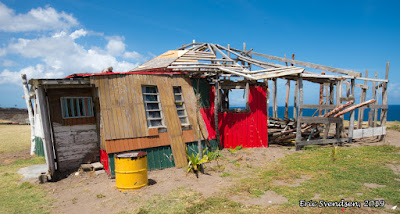 |
| The nutmeg fruit; photographed in Fiji. |
One that particularly caught my eye was the nutmeg fruit. The outer flesh is edible and may be used to produce jams and chutneys. The inner seed contains the main commercial interest though. It has three distinctive layers. The outer layer is a vibrant red and is used to make mace. The shell lies beneath that which contains the seed; it is the source of the spice nutmeg.
Nutmeg was originally cultivated in the Spice Islands and was kept under strict management to facilitate a monopoly. The entire seed was popular in Europe and England for both its flavour and many of the mystic properties it allegedly held. Some of beliefs included its ability to attract admirers, increase virility, ward off evil, and protect against a host of ailments. With so many benefits and such limited stock the spice became very expensive; a pound of it could buy several beasts of burden. At one point it was more valuable than gold.
Today we value the spice itself and the mace which encases the nutmeg's shell. Not only are they popular in culinary circles, they both are important components of stomach and intestinal medicines and are used to treat a host of other medical conditions ranging from insomnia to cancer.
It is clear that, both historically and currently, that the nutmeg plant produces a valuable commodity with remarkable properties. Nutmeg truly is the spice of life.
Thanks for reading. www.ericspix.com





